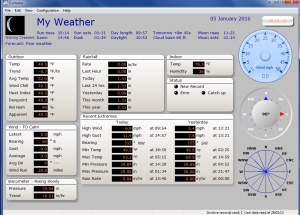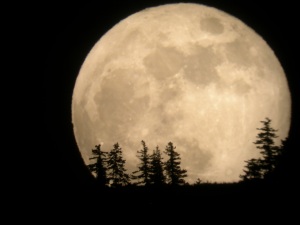[Some of my friends may be under the impression that all American Protestant churches are like those churches run by Jerry Falwell, Jr., or Billy Graham’s son, etc., or hold views extolled by Pat Robinson, Ralph Reed, James Dobson, or others of their ilk. Nothing can be further from the truth. Witness a letter that the Bishop of the local region of the Evangelical Lutheran Church of America]
Pastoral Letter from Bishop Erwin
To the pastors, deacons, and people of the Southwest California Synod, Evangelical Lutheran Church in America:
Dear siblings in Christ, grace and peace to you in Jesus’ name!
Just over a week ago now, the screens of our television sets and our internet news feeds were filled with images of angry, torch-carrying demonstrators in Charlottesville, Virginia, where a gathering of white nationalists, Klan members, and neo-Nazis were challenged by demonstrators of many kinds, including many representatives of our church, our full communion partners, and other churches and faith communities.
The bishops of two of our synods (and one bishop-elect) were also present, and engaged both in counter-demonstration and some structured dialogue with those on the other side. Those of you who monitor my Facebook and Twitter feeds (and those of the synod) know that we were also watching these events closely and reacting strongly to what we saw.
For many white Americans, the events in Charlottesville came as a shock. But for Americans of color-and for anyone who has a heart for the true American story-these were not new: only the most recent victims of racism-inspired violence in our country. The scenes in Charlottesville were disturbing, but most of all because they could have been anywhere in the United States.
White nationalism and the racism at its heart are not a new phenomenon in the United States. They have accompanied our nation from its birth, through its rise to continental dominance, and into its world leadership in the 20th century. Ideas of white supremacy in visible in our governing documents. White supremacy is part of the underpinning of the national myth of European-Americans populating an empty land and making it prosperous through hard work and trust in God. It ignores the violent destruction of the native peoples except as examples of a natural obstacle to be overcome. It cloaks the national dependence on African slave labor in the language of economic necessity, when in fact it represents a deep and tragic moral flaw in the nation’s character and history.
The self-criticism and remorse that such a tragic history should call forth from contemporary Americans is clearly not shared by all and is rejected by some. Claiming the superiority of white, European-American culture, alt-right protesters use images evoking the rise of Nazism and other fascist symbols, and chant slogans dismissive of people of color, non-Christians, and LGBTQ+ people. And, of course, the white protesters were almost all male. There is an undercurrent of sexism here, too.
Those white nationalist protests in Virginia and elsewhere have now torn the veil from the face of hate; they have brought to the forefront again our nation’s legacy of violence born of racism. They have revealed to us the depths to which some are willing to go to drive wedges between us; and they have revealed to us that even the nation’s highest officials are unwilling to confront the racism that is part of the weave of the American social tapestry.
It is impossible to overstate the pain that this series of events has caused many of us, especially our friends and neighbors of color. But this is about all of us, whatever our race, religion, ethnicity, age, gender or sexuality. This is about the deliberate attempts to create division among people in our society to further political ends, and to sacrifice the well-being of those who are “different” to a false narrative of America dominated by white, male, straight, English-speaking people. White nationalism is a denial of diversity and a devaluing of “otherness” among our neighbors. It is racism, and it is sin: denying the image of God put into in every human being by their Creator.
Those who do not resist racism in our society are complicit in it. So how are we, as Christians and as a Lutheran church, to respond to this remarkable and painful turn of events? I believe we have both the obligation to speak out and act, and the resources we need to do so. The Evangelical Lutheran Church in America has made clear for many years its opposition to racism: in its social statement “Freed in Christ: Race, Ethnicity, and Culture” from 1993, our church has made its opposition to all forms of racism-personal and systemic-clear, and has called on us to renounce the racism in our hearts, our congregations, and our society.
I believe we are called to pray, to learn, and to act. None of these is optional, but as people of God, we always begin with God. God’s love has a human face: the face of Jesus the Christ. Born a human, a Palestinian Jew, Jesus presents us a face as familiar as our neighbor and yet entirely unknown. Jesus was not white-he was what he needed to be to be with those among whom he lived, and for us he is what we need, now, whoever we are. Jesus’ face is our face, when we love and care for one another. Jesus’ love crossed boundaries of race and nationality, too, and Christianity has never been limited to one race or language or ethnicity.
So out of our common faith in a single God and God’s love revealed to all in Christ, we are encouraged to call on God for help and hope, we are engaged with one another in an effort to understand each others’ stories, and we are empowered to act in Jesus’ name to make ourselves, our congregations, and our communities better and freer of prejudice.
In the name of Jesus Christ, I call on our people and our congregations in this synod to:
Pray for courage to speak out against racism, even in those closest to you, and act to call all those around us to understand and account for the racism they harbor.
Pray for clarity to understand our own role in social injustice; pray for forgiveness for the wrongs we have committed as well as those from which we have simply benefited-and act to protect the vulnerable in our midst from harm.
Pray for wisdom to be listeners and learners, especially to listen to those who have been victimized by racism and re-victimized by the failure of our nation to address its ancient injustices. Pray for insight into the ways prejudice stains everything we do, and strength to act to challenge it in ourselves and others.
Pray for strength to resist the forces of evil wherever they are found, for as long as we are able. None of this is new; none of it can be wiped away in a single generation, no matter how much we want it to. But we can act to resist it again and again, and we must be prepared to do so.
Pray for each other, that kindness and neighbor-love outweigh pain and suspicion-and put that kindness into action for each other, and for those we don’t know personally.
Pray for the church, that the presence of Christ in our midst give us the strength and compassion to make the changes we need to make, to accept the imperfection of human striving, and to abide in the hope of justice in the reign into which God is leading us. We also act when we worship, when we built community, and when we show one another love.
I spent the last week, like many of you, in deep anger at the ignorance and spite I saw manifested in Charlottesville. I am still angry. But I am also hopeful.
Somehow, I feel that I see more clearly now than I have ever seen. Racism and prejudice have revealed themselves anew; public leadership has failed to renounce them fully. We are not in a post-racial America-we are just beginning to understand what it means to be diverse. We are in a new time, not just of civil rights laws, but of an actual change in our people toward a genuine appreciation for our remarkable, enriching American diversity-the diversity that we enjoy in Los Angeles and its metropolitan area.
Clearly there are still many for whom this diversity is threatening. But it is no longer optional. The myth of “white America” is dead, carried to its grave by the light of tiki torches, interred at the foot of a Confederate statue in Virginia. The clock does not turn back. Diversity is here-right here in our community-and we must meet it as befits Jesus’ people, as disciples of the Christ.
I no longer believe that the struggle against racism is one that I can simply wait to see completed. It is no longer the challenge others need to meet. It is my struggle, too, both inside myself and in my life in society. And it is a struggle for our church.
May God help us as we push forward toward justice, equality, and a love that transcends difference and embraces us all.
With unwavering trust in God’s love for all, I extend to each of you my blessing: may God grant you strength, boldness, courage, and peace!
+Guy
August 19, 2017




